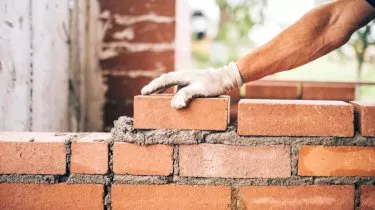Invest
Is fractional property investing a path into the housing market for younger Aussies?
Invest
Is fractional property investing a path into the housing market for younger Aussies?
As the price of entering the property market continues to climb, new fractional property investment platforms promise to offer younger Australians a more affordable entry point.
Is fractional property investing a path into the housing market for younger Aussies?
As the price of entering the property market continues to climb, new fractional property investment platforms promise to offer younger Australians a more affordable entry point.

The idea of fractional investing isn’t a new one.
The practice has existed for a number of years in traditional stock and less-traditional cryptocurrency markets, allowing investors to begin building their portfolios at a far earlier stage.
In contrast, fractional property investing is far less well known. It won’t help first home buyers secure a place to live in, but it can help those looking to enter the market as investors begin building equity at a lower price point.
What is fractional property investing?

Fractional property investing is more or less exactly what it sounds like. Rather than invest in the equity of a whole property, you’re able to invest in a fraction or slice of it. At a high level, it’s not terribly different to how fractional ownership of shares works.
The underlying logic here is that fractional property ownership requires a significantly smaller initial investment than that needed to break into the traditional property ladder. It costs less to buy 1 per cent of a property than it does to buy the whole thing. Rather than wait and save for years towards a deposit, you can benefit from the rise of Australian housing prices today.
Therefore, on paper, fractional property investing is a more accessible way for younger or less-established investors to enter the property market.
How can I start fractional property investing in Australia?
There are currently two established fractional property investment platforms in Australia: BrickX and DomaCom.
How does fractional property investing work?
The details might vary from one fractional property investment firms to another but an overview of the mechanics of fractional property investing is as follows:
Firstly, a property is purchased. In Australia, this is either done by the fractional property platform directly or via a property syndicate.
In the case of DomaCom, investors crowdfund towards the purchase of properties that are selected by DomaCom. Under this model, the property only gets purchased if the buy target gets reached.
In contrast, BrickX uses a buyer’s agent to locate potential properties and purchases them on behalf of the company.
The equity of the property is then split into a set number of units. At this stage of the process, property gets fractionalised.
For example, BrickX divides ownership of properties into 10,000 units called Bricks.
Following this, investors are assigned equity in proportion to their investment. Once allocated, units can be bought, sold or left to accrue returns via a share of rent generated by the property and/or any potential capital gains.
In the case of platforms like DomaCom, fractional ownership is tied to a set term. At the expiry of the term, a vote among investors determines whether the property should be sold or kept.
If the majority of investors agree to keep the property, they then have a window of opportunity to buy out those who wish to sell. If they don’t, then the entire property is put on the market.
What do the experts say about it?
Although fractional property investing makes up a tiny slice of the wider property market, those inside the industry are optimistic about its growing appeal.
Speaking to Smart Property Investment, general manager of sales and marketing at DomaCom, Warren Gibson, predicted that “the market will continue to grow”.
“The minimum investment is about $1,000, so it’s a lot easier to invest $1,000 in a bit of a property rather than trying to acquire an entire property.”
“They can put as little as $1,000 in or as much as they wish, and then they share in the income and future value of the property.”
While fractional property investing is a popular way into the market for younger investors, Mr Gibson said it also has appeal to more established property investors looking to diversify their portfolios.
“If you’ve got sufficient to buy an entire property, why not spread it across multiple properties. That’s what fractional investing allows you to do – to diversify across property types, geographic locations and so on,” Mr Gibson said.
Others in the property world are more sceptical about fractional property investing.
“In theory, fractional investment can be a way to help investors keep saving towards a deposit while still being in the market,” Arjun Paliwal, head of research at InvestorKit and co-host of The Property Nerds podcast, told Smart Property Investment.
However, “many of those interested in residential fractional property investing are those led to believe that property ownership is out of their reach or simply unaffordable. I would respectfully challenge them doing it for that reason and suggest they consider broadening their search parameters,” Mr Paliwal added.
“Where I believe fractional investment plays a key part is in deals that materially change in performance and what is available as prices rise, more often found in development deals and commercial property. Funds exist today to capture these types of deals. This is where I feel fractional investment truly makes a difference,” said Mr Paliwal.
About the author

About the author


Property
New investment platform Arkus allows Australians to invest in property for just $1
In a groundbreaking move to democratise investment in property-backed mortgage funds, GPS Investment Fund Limited has launched Arkus™, a retail investment platform designed to make investing ...Read more

Property
Help to Buy goes live: What 40,000 new buyers mean for banks, builders and the bottom line
Australia’s Help to Buy has opened, lowering the deposit hurdle to 2 per cent and aiming to support up to 40,000 households over four years. That single policy lever will reverberate through mortgage ...Read more

Property
Australia’s mortgage knife‑fight: investors, first‑home buyers and the new rules of lender competition
The mortgage market is staying hot even as rate relief remains elusive, with investors and first‑home buyers chasing scarce stock and lenders fighting for share on price, speed and digital experienceRead more

Property
Breaking Australia’s three‑property ceiling: the finance‑first playbook for scalable portfolios
Most Australian investors don’t stall at three properties because they run out of ambition — they run out of borrowing capacity. The ceiling is a finance constraint disguised as an asset problem. The ...Read more

Property
Gen Z's secret weapon: Why their homebuying spree could flip Australia's housing market
A surprising share of younger Australians are preparing to buy despite affordability headwinds. One in three Gen Z Australians intend to purchase within a few years and 32 per cent say escaping rent ...Read more

Property
Tasmania’s pet-positive pivot: What landlords, BTR operators and insurers need to do now
Tasmania will soon require landlords to allow pets unless they can prove a valid reason to refuse. This is more than a tenancy tweak; it is a structural signal that the balance of power in rental ...Read more

Property
NSW underquoting crackdown: the compliance reset creating both cost and competitive edge
NSW is moving to sharply increase penalties for misleading price guides, including fines linked to agent commissions and maximum penalties up to $110,000. Behind the headlines sits a more ...Read more

Property
ANZ’s mortgage growth, profit slump: why volume without margin won’t pay the dividends
ANZ lifted home-lending volumes, yet profits fell under the weight of regulatory and restructuring costs—an object lesson in the futility of growth that doesn’t convert to margin and productivityRead more

Property
New investment platform Arkus allows Australians to invest in property for just $1
In a groundbreaking move to democratise investment in property-backed mortgage funds, GPS Investment Fund Limited has launched Arkus™, a retail investment platform designed to make investing ...Read more

Property
Help to Buy goes live: What 40,000 new buyers mean for banks, builders and the bottom line
Australia’s Help to Buy has opened, lowering the deposit hurdle to 2 per cent and aiming to support up to 40,000 households over four years. That single policy lever will reverberate through mortgage ...Read more

Property
Australia’s mortgage knife‑fight: investors, first‑home buyers and the new rules of lender competition
The mortgage market is staying hot even as rate relief remains elusive, with investors and first‑home buyers chasing scarce stock and lenders fighting for share on price, speed and digital experienceRead more

Property
Breaking Australia’s three‑property ceiling: the finance‑first playbook for scalable portfolios
Most Australian investors don’t stall at three properties because they run out of ambition — they run out of borrowing capacity. The ceiling is a finance constraint disguised as an asset problem. The ...Read more

Property
Gen Z's secret weapon: Why their homebuying spree could flip Australia's housing market
A surprising share of younger Australians are preparing to buy despite affordability headwinds. One in three Gen Z Australians intend to purchase within a few years and 32 per cent say escaping rent ...Read more

Property
Tasmania’s pet-positive pivot: What landlords, BTR operators and insurers need to do now
Tasmania will soon require landlords to allow pets unless they can prove a valid reason to refuse. This is more than a tenancy tweak; it is a structural signal that the balance of power in rental ...Read more

Property
NSW underquoting crackdown: the compliance reset creating both cost and competitive edge
NSW is moving to sharply increase penalties for misleading price guides, including fines linked to agent commissions and maximum penalties up to $110,000. Behind the headlines sits a more ...Read more

Property
ANZ’s mortgage growth, profit slump: why volume without margin won’t pay the dividends
ANZ lifted home-lending volumes, yet profits fell under the weight of regulatory and restructuring costs—an object lesson in the futility of growth that doesn’t convert to margin and productivityRead more








